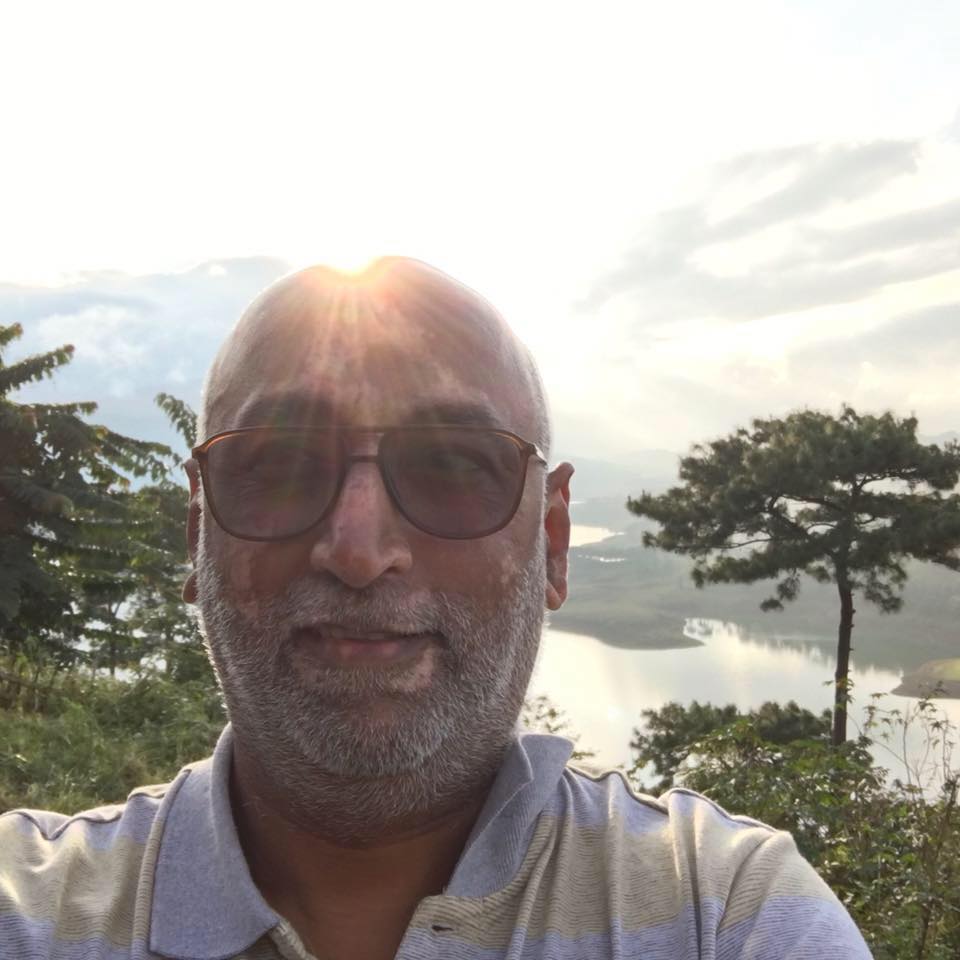While the Supreme Court has currently put a hold on further developments of the Metro shed at Aarey, we talk to Anand Siva to know how baneful the repercussions of the proposed development can be!
For over two years, some citizens of Bombay have been fighting a battle — a battle to save one of the world’s most unique ecosystems, home to an unfathomable number of lives in the form of insects, reptiles, amphibians, birds, mammals and trees - often referred to as Bombay’s lungs — a battle to SAVE AAREY!
We spoke to Anand Siva, an Earth-loving maverick who is actively contributing to saving Aarey and even has a solution to save us from the immeasurable repercussions of what seems to be the tip of an iceberg.

Some people have mitigated the severity of the issue by calling the proposed location for the Metro shed in Aarey “a small piece of land”. What do you have to say about that?
“I think, firstly, we need to understand the context of what people are trying to see and what they are being shown. The 2,600 trees that are being axed right now, it’s like a trailer. Every day, they will add one scene even though the matter is sub judice. Tomorrow the interiority of the location will be brought up, possibly demanding a Metro colony or accommodation for the employees to stay. Eventually, they will start taking one piece of land after another having acquired a toehold in Aarey.
So when people say “it’s only a small piece of land”, yes, I agree that in the context of the expanse of Aarey, it appears to be a small land, but the problem is it will not stop with this. Secondly, the moment you go touch a very diverse ecological system like the Aarey forest, you are disturbing a lot. You are going into the path of animals. There’s going to be vehicular movement, vibrations, people moving around; this disturbs the entire serenity and the pristineness of the place that many lives worship — animals and people alike.
So calling it “a small piece of land” is being very myopic. It is being very generously appreciative of what they think the government is capable of doing, but we all know that this is a toehold and we will not allow this because greed will only get the worse of that.”
Not many consider it to be a “forest”.
“That is a perpetual problem in India, right? The whole of the country does not have a single definition for the word “forest”. But the question that should be asked is not whether it should be called a “forest,” but whether it has the characteristics of a forest. Which means it has biodiversity — and what do we mean by biodiversity? It encompasses all forms of nature, right? In Aarey, there is a water body, there are hillocks, trees, plants, butterflies, insects, reptiles, leopards and more! What more do you want, to call it a forest?! The nomenclature doesn’t matter.”
Do you know of any surveys that document the biodiversity of the proposed place?
“A survey is not the best way of looking at biodiversity because animals, birds, and reptiles don’t have a boundary — they don’t have geography. There is nothing called ‘biodiversity exclusive statistics’; there is no specific record of this place that’s being passed for the Metro shed, but the overall expanse of Aarey is extremely rich in wildlife. Let me give you some numbers: there are between 8-9 leopards, 16 identified mammal species (apart from leopards), 76-78 bird species, 75 to 80 butterfly species, 38 different reptile species and close to about 4-and-a-half lakh trees inside Aarey! It must be noted that these trees are very diverse species of trees; as far as I know, there are close to about 300-350 different species of plants and trees inside. There are lakes, water bodies, even the Mithi river flows inside — which indicates aquatic life. This is just what can be classified as animals, birds, reptiles and trees. If you add to that all the insects that are there — bugs, beetles, worms and the underground creatures — I don’t know how many species there could be. It could be anywhere between 200-250 different species of other life forms!
So, if you look at all of that, there is no count to the species that live in that biodiversity. This also connects well to your earlier question about the ‘small piece of land’ — there’s water flowing in a very geometric, natural way and you go there and set up a shed, you will obstruct the flow of wind, pollination will get impacted, the flow of water will be affected… everything will get impacted, right? So there’s nothing called a ‘small piece of land’ in a forest. Being obtrusive about a forest will damage the ecosystem, regardless of the size of the land.”

Were there any violations?
“Until you don’t touch the land, there have been no violations. Otherwise, it’s been more of a lot of psychological warfare, where they’ve been desperately trying not to call it or not to concede that it is a forest.
In terms of violation by government, massive violations that happened are about the way document records have disappeared. For example: there is evidence to show that Aarey was declared a forest in, I think, the year 1951. Very strangely, those records are missing from the government archives. Only these records are missing. So the government says there is no record available to show that it is a forest. But there are people, historians and activists, among others, who have worked on this and even, very categorically, given the year and the kind of record that is available. So to me, if something as important as land records have gone missing, it’s a gross violation of the responsibility of a government who are supposed to be custodians of the land.
Let’s talk about the cutting of the trees. The High Court gives an order at 11 o’clock. By 8 o’clock in the evening, hundreds of heavy machinery have gone into Aarey forest — machines that were not there two weeks ago. Now those machines could not have moved between 11 o’clock in the morning and 8 o’clock in the evening because it takes a lot of time for these heavy machines to be moved in. And there are people who stay there, who know that the machine movement did not happen on the 4th of October, which means the government had already moved all of this heavy machinery into the forest area even before the court ruling, which is a violation.
From an activist’s part: I think it is a violation to go there and stop the government from doing its job. But considering that we were stopping an illegal act, I wouldn’t call it a violation.
To me, it violated the forest. So the first thing is a violation of the High Court; in fact, it is the manipulation of the High Court ruling. The second violation is to cut down trees after sunset, which is against the law. You are not supposed to start any deforestation activity after sunset and that is a very, very, very appropriate law because all the birds come back to the nest. We have no idea how many nests went crashing down, how many chicks died, how many birds died, how many eggs broke. Everything would’ve gone into severe trouble because of nighttime activity. Nighttime is a serious activity time in the forest; we all know that, we’ve been taught that in school.
Third violation: They knew that it was a very emotional aspect for activists. We’ve been fighting for Aarey for 4 years now. I mean, for somebody who’s saving the planet, you’re putting them in jail?! So for 2 reasons, I think it is a very, very serious, probably the most serious violation — you’ve spoiled 29 lives — they’re scarred. Ladies were molested. Not acceptable! It stopped so many people from coming forward to work for the environment. And worst of all, October 4th was World Animal Day, and we went and destroyed hundreds of thousands of animals.”
What is going to be the prospective impact on wildlife in Aarey?
“Number 1: The whole area will be massively disrupted.
Number 2: We have leopards there. One leopard kills one worker and they will declare the leopard a ‘man-eater’ and then there will be a series of issues that will follow. So the impact is immeasurable. The extensive construction activity that will happen will involve heavy equipment going in and out, there will possibly be dynamite blasting, there will be construction work going on all over. This process will go on for probably two to two-and-a-half years. No animal can live in peace, which poses as a prospective danger for citizens. We cannot gauge how they will respond.
So suddenly we might have adjoining residential areas talking about monkeys coming into the apartment. We could find reptiles moving around. There could be a lot of snakes that move out and get into residential complexes, and that’s what leads to a lot of killing in broad daylight; people don’t stand quiet and watch a snake. So the impact of this is going to be a residual effect of unending killing.”
What can people do?

“We are all talking; we need to do something. There’s no point in people like you and me sitting and crying over it. We are talking about an imposing situation in the world’s environment. We are saying deforestation should be stopped, single-use plastic should be stopped. We are talking about so many global warming issues happening across the globe that need us to slow down dramatically. We should start making some difficult decisions — what is more important: today’s comfort or tomorrow’s future? We are focusing on taking away something that has taken centuries to form. People must not get misguided by those saying “I’m planting 2,500 saplings”. 2,500 saplings do not make a forest.
And the most important thing is that none of these people think that activists are doing this for the good or that they are not anti-Metro. We are anti-Metro shed in Aarey. There is a big difference.
People in Bombay must realise that the forest is important as biodiversity. I will be happy to go to MMRCL and tell them we are willing to put up a team of experts who will help you manage animals that are coming under threat in the construction area. We are not able to do that; we’re not having a good dialogue with people in power or people in the government machinery. We’re not doing this as a community project.
So people must come forward and say, “No, we want the forest and the Metro. Can we find a middle ground?”. If all of Bombay says “Yes” for Metro, “No” for Aarey Cutting, the problem will be solved. The benefit of the forest is for everybody, not merely for the activists. The government must realise that it is a public opinion and not activists’ interest!”
That’s some amazing, first-hand insight for you. It’s now time to reflect, join hands and act! How are you going to #SaveAarey?